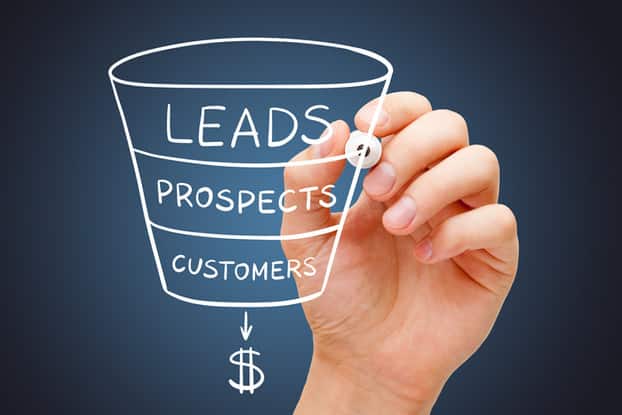A handful of sales managers often struggle to create scalable sales processes that should regularly bring in recurring customers. And for this reason, we’ve put together this guide to assist you in determining the best strategies for developing a sales process that’s specific to your business. In this post, we cover the best practices when it comes to creating an effective sales management process covering its steps, stages, and examples to give you a clearer perspective of how to do this rightly.
Sales Management Process Overview
One thing is certain about working in B2B sales: it never gets boring.
In reality, several people chose sales as a career because they believe it will provide them with more freedom and less rigidity.
And they are not mistaken!
Working in sales allows you to have some control over how you go about your everyday tasks. And to acquire that desired “It’s a deal!” from prospects, you need to be adaptable and willing to improvise as a salesperson.
Another “fun” aspect of sales is that buyers can be extremely choosy, unduly careful, impetuous, and even suspicious! That is why salespeople must be resourceful and adapt their sales approaches to the requirements and whims of potential customers.
So, you say, how can something so fragile work under a set plan? Let’s find out…
Sales Process Definition With Examples
A sales process is a set of repeatable procedures or steps followed by a salesperson to get a potential buyer from awareness to a concluded deal.
The sales process stages include; Prospecting, preparation, approach, presentation, handling objections, closing, and follow-up.
In simple terms, it is the route taken by a potential customer from recognizing a need for a product to making a purchase.
The sales process is a blueprint for a salesperson since it is a roadmap for a prospect. However, this should not be misconstrued for a sales funnel.
A sales funnel depicts all of the active sales activities and interactions that take place between a prospect and a business. Consider it a hypothesis that depicts a customer’s path to making a purchase.
While most sales teams are aware that they go through a similar process, few choose to codify and standardize it, leaving it up to individual sales representatives to select which stages to follow and when.
The logic is pretty straightforward: as long as salespersons continue to close deals and generate revenue, how they do so is their own business.
However, unless you are a natural-born salesperson, a standardized sales process can help you enhance sales measurement, forecasting, and general administration.
Why Do You Need to Create a Sales Management Process?
A sales process can be thought of as a road map for your sales staff as they work to convert leads into clients. Your marketing team’s lead-generating efforts would quickly go to waste if you didn’t have the map.
A standardized sales process could also assist less experienced salespeople in swiftly learning best practices, steps, and what to do at various stages of the sales process.
When you have a proper sales process, you generate more money. And, when you provide your sales staff a uniform foundation to operate with, they’ll be able to close deals faster.
Let’s look at the stages or steps that a typical sales process takes now that you know what a sales process is and why you should design one.
The Stages or Steps in Sales Managment Process
The ensuing paragraphs cover the steps or stages of a sales process.
#1. Prospecting
Prospecting is the process of identifying fresh, early-stage leads with whom to begin the sales process. It’s an important element of the sales process that most reps do on a daily or weekly basis.
Online research on sites like LinkedIn or Quora could be part of the prospecting process. It could also happen at conferences or industry gatherings. Prospecting can also be done by requesting current clients or coworkers to refer people who might be interested in your product or service.
#2. Connect and Qualify Leads
Reps initiate contact with those early-stage leads in the connect step of the sales process to obtain information. The second element of this stage is certifying new leads. This entails determining whether or not they’re a good fit for your business; plus whether or not they’ll likely go through the buyer’s journey.
During a “connect” or “discovery” conversation (or occasionally by email if not via phone), a rep can often identify qualified prospects by asking qualifying questions like:
- “How do you fit within your company?”
- “What do you do on a daily basis?”
- “Can you tell me what problem you’re trying to solve?”
- “What makes this such a high priority for your company?”
- “Are you looking at any other options?”
#3. Research the Company
The research phase follows, during which reps learn more about each prospect and firm.
Research allows your salespeople to put themselves in the shoes of their customers, enabling them to provide a more customized and personalized experience, and increasing the likelihood of a sale.
Understanding each prospect’s difficulties and needs, as well as establishing your product or service as the solution, is critical at this stage.
To acquire a comprehensive understanding of the business and its aims, your representative may need to speak with other people in different departments at the company. A competent salesperson should have a more comprehensive understanding of the firm than the particular prospect who works there.
#4. Give an Effective Pitch
The presentation step is when your salesperson gives your prospect a formal product or service demonstration.
Because this stage takes time, it is usually saved for better-qualified prospects later in the sales process – which is why the connecting and qualifying step is so important. You don’t want a sales rep to waste any of their time if it can be avoided.
Customize each presentation to the prospect’s specific case and pain concerns. A sales representative may also invite an engineer or executive to the meeting to demonstrate the level of service the customer would receive if they do business with your company. This also allows them to address more technical inquiries that a customer service representative might not be qualified to handle.
#5. Handle Objections
Prospects frequently raise issues with your salesperson’s presentation and proposal. It’s expected, in fact, which is why this is a distinct step in the sales process. Any and all objections should be handled by your sales team.
Listening to your prospects’ concerns and queries might assist your sales professionals to personalize your offering to their specific needs. Reps should identify and anticipate any objections throughout their research and presentation preparation, whether it’s about cost, onboarding, or other aspects of the proposed contract.
#6. Close The Deal
This stage of the sales process includes any late-stage activity that occurs when a contract nears completion. It can include giving a quote or proposal, negotiating, or gaining decision-makers buy-in, and it varies considerably from firm to firm.
Every salesperson aspires to complete a transaction. It should result in a contract between the prospect and the seller that is mutually advantageous. When a contract is closed, the salesperson is paid a commission based on the price they negotiated with the customer, and the account is typically handed over to an account manager or customer success representative.
#7. Nurture and Continue to Sell
Although closing deals is the ultimate goal in sales, sales professionals do not cease working with customers once they have done so. Reps should not only ensure that customers receive what they ordered, but they should also assist in the transition of clients to the team in charge of onboarding and customer success.
Continuing to communicate and reinforce value to consumers is also part of the final step of the sales process. This can lead to opportunities for upselling and cross-selling, as well as securing referrals from happy customers.
12 Techniques to Develop a Successful Sales Management Process
Working by relying on your abilities and resourcefulness is a fun way to do things. Sales, on the other hand, is not a game of intuition or imagination. A sale is a collection of tactical steps that must be followed in a specific order.
Here’s how to create a systematic sales process for your team or for your daily sales operations.
#1. Conduct an Interview With Your Sales Team
Like we earlier mentioned, a sales process is a set of steps that encompass all of a sale’s main milestones. Each stage has duties that a salesperson must complete in order to move a prospect from one stage to the next.
The first step, however, is to fully understand what your sales force is doing now to convert prospects into clients.
- How do your salespeople establish rapport with potential customers?
- What is the last thing they do before a sale is completed?
Interview your sales team to discover their language, strategies, and techniques, which you can then use to create a unified plan that can be repeated and systemized for others.
#2. Get Rid of the Trash
You’ll have a better knowledge of what’s working and what isn’t in your sales if you have a structured process with particular chain-effect actions. Defining what triggers (actions) drive prospects to go from one stage to the other makes it simple to identify the RIGHT actions and eliminate bottlenecks and ineffective operations.
#3. Stay on Track at All Times
A “sales rep’s roadmap” is a term used to describe a sales process.
A salesperson will not be told to “do this, then do that” if they follow a roadmap. A sales process, on the other hand, will function as a GPS system with distinct steps and milestones. Knowing what each stage requires can assist salespeople to figure out where they are in the process when it’s time to move on to the next step, and when to change their strategy.
#4. Put Your Sales Skills to Good Use at Every Turn
Having a sales process does not mean that you can’t be creative! And because the sales process will not dictate how to sell on social media, how to organize your sales pitch, what to write in a sales email, or how to draft in a proposal, you may rely on your gut instincts and creative abilities to get from one step to the next.
#5. Step Into Your Customer’s Shoes
Companies frequently design sales processes that reflect how they want to sell rather than how their customers want to buy.
A good sales process should be adaptive to various selling situations and customer requirements. Asking the following open-ended questions while designing a sales process with your customer in mind, sets things in perspective:
- What are the key customer groups that I serve?
- What are the differences in their purchasing habits?
- How do I sell to new consumers and recurring customers differently?
- What are my consumers’ expectations at each stage of the sales process, and how can I meet them?
#6. Take a Relationship-Led Approach
Customers desire a long-term engagement with businesses.
“Members of the next generation of customers flock to organizations that treat them as if they are special, rather than ‘just another number,’” according to Gartner. Customers want a connection, a relationship, with the businesses they do business with.”
In other words, when you get a potential customer’s attention, take a relationship-driven approach and explain what that means for your salespeople.
Active listening, empathy, note-taking, trust-building, and follow-up are excellent abilities for establishing and maintaining client relationships.
#7. Find the Cause of Stalled Sales
Sales professionals can uncover the fundamental cause of halted sales by following a sales process. You can examine whether or not your activities were sufficient, how many of them you truly needed, and what proved to be a misstep or a waste of time by following a set of procedures.
This means that if you work with a sales process, you can identify not just what was accomplished and what wasn’t, but also how it was accomplished.
#8. Get More Qualified Leads
Adopting a well-defined sales process can assist your sales staff in overcoming its toughest challenge: filtering out low-potential leads and identifying the prospects with the best chance of buying.
In fact, more than 70% of all B2B sales cycles last between 4 and 12 months, which is why identifying quality leads earlier in the process will not only help you shorten and focus your sales cycle, but will also assist your sales staff to maximize their efforts.
#9. Improve Forecasting and Revenue
Sales managers can make more accurate sales forecasts if they have a clear picture of where their salespeople are in the sales process. Because a sales process is comprised of a series of steps that can be repeated, it provides a more consistent picture of how many deals your team closes from a given amount of leads. This helps you to more accurately anticipate your win rates and set quotas.
#10. Never Miss a Follow-up
A timely follow-up email is one of the most crucial parts of winning a transaction.
Sales reps may neglect to follow up with potential customers during a (sometimes lengthy) sales interaction. This alone has the potential to sabotage a sale. The impulse to buy is kept alive through follow-ups.
However, as we all know, following up is difficult.
It’s presently ranked as the third most difficult task for sales teams.
A systematic sales procedure will, however, remind you when to follow up with a prospect and maintain a healthy sales pipeline at all times. It may also provide a form of follow-up activity as well as a template for use.
#11. Offer Better Customer Experience
Most sales representatives often push a consumer into the next phases of a sale before they are ready.
This can not only harm the relationship, but it can also lead to the transaction being broken. A well-designed sales process that prioritizes the consumer can transform a disorganized and frequently pressured sale into a pleasant customer experience.
A sales process will offer the steps that sell value, increase trust, and create a stronger link with a potential client – all at the perfect moment – based on your customer’s buying behaviors and expectations.
#12. Onboard Sales Rookies With Ease
If your new salespeople are asked to shadow (watch) their colleagues sell instead of receiving proper training, you definitely need a sales process!
A well-defined sales process makes it simple to educate new salespeople and coach your existing sales team. It will not only provide concrete sales processes for them to follow, but it will also highlight what behaviors and abilities are required for each stage of a sale, what outcomes are expected at each step, and how they should use their individual talents at various phases of the sale.
How to Make Your Sales Process Management More Effective
These best practices can assist you in enhancing the effectiveness of your sales process throughout your whole team and customer base.
#1. Examine your existing sales process
Consider what’s working and what isn’t for your sales agents so you can better design your new process to meet their needs, which will help you close more deals and please more consumers.
Observing sales reps as they move through the process is one approach to assess the success of your current sales process.
Take a look at the previous five or ten transactions you completed. What did these transactions look like from start to finish? What were the customer’s pain points of contact?
Consider how long the process took in total and how much time passed between each phase. The more examples you have (and the more people on your team from whom you can draw those examples), the better.
After you’ve created that timeline, move backward to figure out how long each deal will take.
You can also delve a little further to uncover the underlying reasons and pain points that pushed each deal to completion.
#2. Outline the Buyer’s Journey for Your Target Persona
Create buyer personas or a buyer’s journey for your target demographic. This allows you to see your sales process through the eyes of your customers. You’ll be able to learn more about their encounters with your reps, as well as the pain points they face and the reasons they require your product or service.
You’ll gain insight into how you can adjust your sales process to ensure your team has everything they need to create good relationships with prospects and close more deals when you outline the buyer’s journey for your target persona.
#3. Define the Prospect Action That Moves Them to the Next Stage
You should know what motivates a prospect to proceed from one level of your sales process to the other. The reason or cause should ideally be based on the prospect’s actions rather than the sales rep’s viewpoint.
Ask yourself the following questions to figure out what action will bring prospects to the next stage:
- “Did a salesperson hit on a specific pain area during warm outreach that prompted the prospect to book a discovery call?”
- “Were there any objections that stymied the transaction or aspects that propelled it forward during the demo?”
- “Did the buyer respond with a resounding ‘yes’ when a salesperson made a pitch? If that’s the case, think about why it happened. How did they prepare for the game?”
#4. Define Exit Criteria for Each Step of the Sales Process
Define your team’s exit models at each step of the sales process. This implies you should figure out what has to happen for your prospects to progress from one step to the next in your sales process. To begin with, look at the steps in the sales process (as indicated above).
Let’s say you’re in the middle of the “presentation” stage. In such instance, your sales agents may discover that they need to share a specific type of content with your prospects, such as customer testimonial videos, in order to get them to “close.”
Consider the following questions when setting exit criteria at each level of the sales process to ensure that all of your agents have the same information. They’ll be able to deliver great, professional, and on-brand information to all of your prospects with this method.
- Before contacting a prospect, what should salespeople know about your brand, what are they offering, and what are the phases in your sales process?
- What should your sales reps do at each stage of the sales process?
- What should your sales people say at each stage of the sale? Make sure your representatives are aware of the various paths a conversation could take and how to handle them all.
- What types of information should your sales staff provide prospects at various stages of the sales process? This is especially critical at the “presenting” stage, when your reps may need to deliver videos, blogs, testimonials, or case studies to help get a prospect closer to a close.
#5. Measure Your Sales Process Results
As your team discovers new ways to work more efficiently and move prospects through your funnel faster, your sales process will evolve. You’ll want to track your progress as you create and improve your sales process to verify that it properly coordinates your team’s efforts and reaches your target audience.
For example, keep track of how many prospects entered and exited each stage of the sales process over a certain time period.
A hypothetical example could be that;
“We started with 75 prospects in the ‘awaiting demo’ phase in July… by the end of the month, we had moved through 28 prospects and added 19, leaving us with 66 prospects in the ‘awaiting demo’ step,” you might conclude.”
Here are some more metrics to think about for the various stages of your process:
- The average length of time that prospects spend in each step.
- Any step that takes too long for prospects to move out of.
- The percentage of prospects who sign a contract after seeing a demo.
- After a discovery call, what percentage of prospects ask for a demo?
- The churn rate (i.e., how can you use this data to identify mismatched prospects early in the sales process if certain customers are churning quickly?)
These are the core metrics that most teams find useful to track. Consider the indicators that are unique to your firm and will help you define success or the need for improvement in a certain step.
The three stages of sales process success are another wonderful approach to gauge your progress. Determining your degree of success will give you a better idea of what you need to improve for your team and prospects in terms of your sales process.
Level 1: Humming
When 80 percent or more of your sales reps meet their monthly quota, your sales process is running smoothly. This is also the time when you’re fast ramping up all of your new hires to target performance and your team isn’t giving you any bad input about the sales process.
Level 2: Experimenting
When your sales process isn’t running smoothly, your team will experiment with and try several approaches to see which is the most effective.
In the “connection” step of the sales process, for example, a team can be experimenting with different modalities of contact to get sales talks started with prospects. When initiating a conversation with a rep, they can see if their prospects respond better to a specific email template.
Step 3: Thrashing
Thrashing occurs when a team moves quickly from one solution to the next inside a sales process. Thrashing is ineffective, and you’ll want to get your team out of it as soon as possible if you ever find yourself in it.
In the “presenting” stage, for example, your reps may be experimenting with various presentation styles, making it impossible to discover what works best for the bulk of prospects.
Remember that your sales process will never be perfect, but it should be growing all the time to meet the demands of your team, company, and prospects.
If you already have a sales process but haven’t yet mapped it out, this is where you should start.
Sales Process Flowchart
A sales process flowchart is a document that outlines the processes that each salesperson should take to convert a prospect into a customer. A sales process flowchart differs from other documents in that it contains yes/no scenarios with action items based on the customer’s reaction. Here is how one looks like;
Sales Methodology vs. Sales Process
It’s critical to know the difference between a sales process and a sales methodology. Although they are closely related, a sales process and a sales methodology are not the same.
As previously stated, a sales process is a collection of steps taken by your sales staff in order to close a new customer.
The framework that supports your sales processes, techniques, and tactics are known as a sales methodology. It’s more of a mindset than a collection of instructions.
Consider your sales process to be a high-level map of the stages your team takes, and your sales methodologies to be the various approaches your team can take to the sales process.
Sales Methodologies
Selecting a sales methodology lays the groundwork for your team’s approach to the sales process. You might want to include one because it’s another approach to expedite your customer’s buying process and ensure professional, impactful, and helpful interactions between your sales team and those customers.
Here are five common sales methodologies.
#1. Challenger Sales Methodology
The Challenger Sales method is a sales methodology in which the seller, or Challenger, is responsible for teaching the prospect. Sellers get an understanding of a customer’s business, customize their selling strategies to their demands and pain spots, and challenge any prejudices they may have.
#2. Solution Selling
Instead of just selling products or services, solution selling demands agents to focus completely on the customer’s problems. Products are presented as solutions, with a focus on the customer’s problem.
#3. The Sandler Selling System
According to the Sandler Selling System, both the buyer and the seller have an equal stake in the sale. To save time for both sides, good sales managers teach their reps to handle customer objections early.
#4. Consultative Selling
Consultative selling stresses the salesperson’s role as a trusted advisor to the customer, with the salesperson gradually gaining authority and trust.
Basically, when a sale is aligned with the customer’s buying experience, it is referred to as consultative selling. In other words, the customer-rep relationship is what determines whether or not a transaction is made.
#5. Inbound Selling
Instead of promoting irrelevant messaging and hoping they’ll buy, the inbound sales method focuses on luring buyers with personalized and relevant content.
Conclusion
Your sales staff will be able to close more deals and convert more leads if you create and map out a sales process. This will also guarantee that your staff gives each prospect a consistent, brand-representative experience. To increase conversions and foster long-term connections, follow these steps to create and map a sales process that is personalized to your company, sales team, and clients.
Sales Process FAQs
What are the 7 steps in the sales process?
The following are the 7 steps and stages of the sales process:
- Prospecting.
- Preparation.
- Approach.
- Presentation.
- Handling objections.
- Closing.
- Follow-up.
What is sales pipeline?
A sales pipeline is a visual, organized way to track many potential buyers as they advance through different stages of the buying process. As they progress through the sales process, potential buyers are moved from one stage to the next: when contact is made, for example, or when a prospect is qualified.
{
“@context”: “https://schema.org”,
“@type”: “FAQPage”,
“mainEntity”: [
{
“@type”: “Question”,
“name”: “What are the 7 steps in the sales process?”,
“acceptedAnswer”: {
“@type”: “Answer”,
“text”: “
The following are the 7 steps and stages of the sales process:
- Prospecting.
- Preparation.
- Approach.
- Presentation.
- Handling objections.
- Closing.
- Follow-up.
“
}
}
, {
“@type”: “Question”,
“name”: “What is sales pipeline?”,
“acceptedAnswer”: {
“@type”: “Answer”,
“text”: “
A sales pipeline is a visual, organized way to track many potential buyers as they advance through different stages of the buying process. As they progress through the sales process, potential buyers are moved from one stage to the next: when contact is made, for example, or when a prospect is qualified.
“
}
}
]
}







